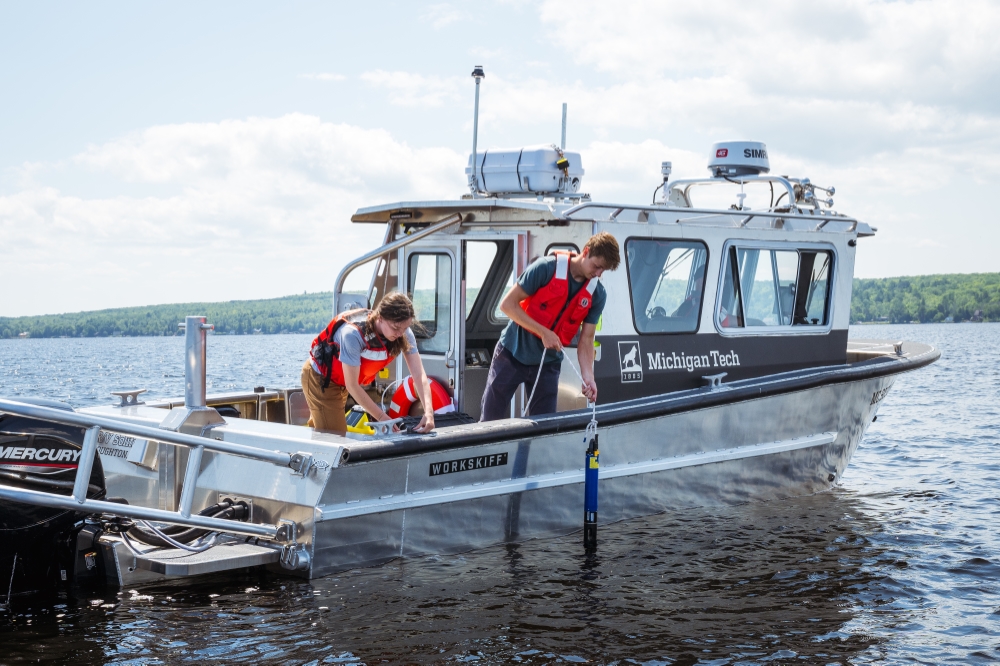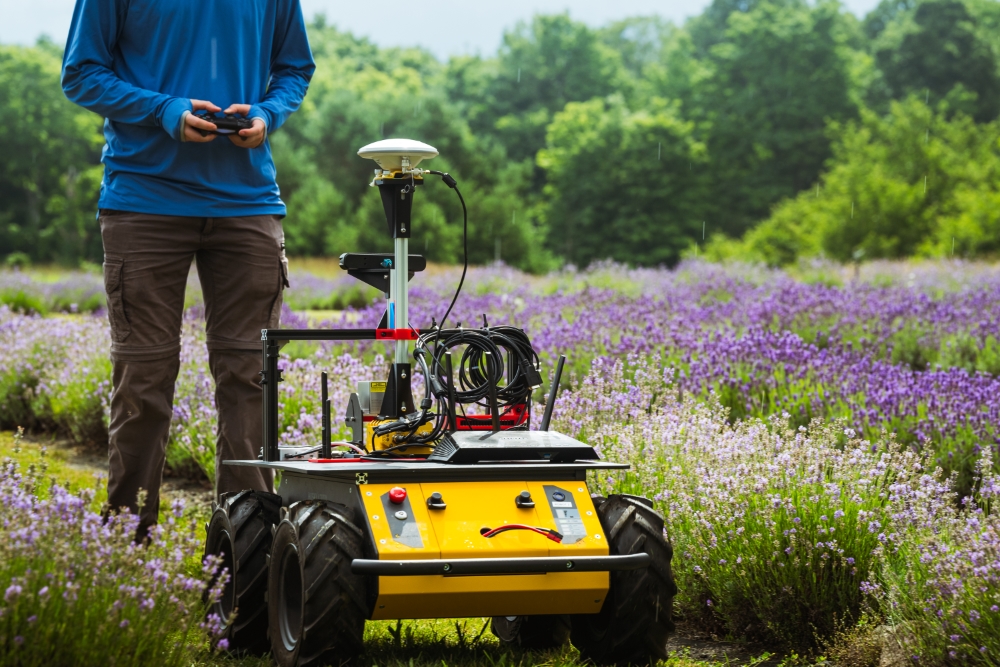How Michigan’s university partnerships fuel industry and innovation.
Michigan’s universities are among the most respected in the nation, consistently earning top rankings for academic excellence and research impact. The University of Michigan in Ann Arbor ranks among the top 25 universities globally, producing world-class research in fields ranging from engineering to artificial intelligence. As the nation’s pioneer land-grant university, East Lansing’s Michigan State University is a leader in agriculture, supply chain management, and engineering, with programs that are globally influential and vital to industries worldwide. Wayne State University, a research institution in Detroit, excels in medicine, law, and business, playing a key role in the region’s economic resurgence.
These institutions and others across the state have produced Nobel laureates, MacArthur “Genius” grant recipients, and groundbreaking research that shapes entire industries. Their graduates lead Fortune 500 companies, launch innovative startups, and drive scientific and technological breakthroughs that change the world.
These achievements are a direct reflection of the caliber of talent being cultivated throughout the state. From engineers and designers to skilled tradespeople and cybersecurity experts, Michigan’s talent pool is as multifaceted as they come, making it a top destination for businesses. The state ranks No. 1 for concentration of engineers and has the nation’s fourth-largest engineering, design, and development workforce. Michigan also ranks in the top 10 for STEM degree completions, tech job growth, and cybersecurity leadership.
But Michigan’s higher education institutions aren’t just excelling in talent production — they are also at the forefront of collaborative research that drives innovation and industry transformation. Research in mobility and autonomous vehicles ensures that the state remains a leader in transportation innovation. Collaborations in health care and life sciences drive medical breakthroughs, from AI-assisted diagnostics to cutting-edge pharmaceutical development. Advanced manufacturing, AI, and sustainability are also at the forefront, with universities working alongside industry leaders to develop the next wave of technological progress.
Research Universities for Michigan
A prime example of Michigan’s commitment to collaboration is the Research Universities for Michigan (RU4M), a partnership initially developed between three R1 universities: the University of Michigan, Michigan State University, and Wayne State University. Since its inception in 2006, the RU4M has served as a driving force for innovation and economic development, harnessing the collective research capabilities of these institutions to tackle some of the most pressing challenges facing the state, the region, and the world. Together, these universities conduct more than $3 billion in research and development annually.

The Michigan Tech Great Lakes Research Center is a national leader in marine science
Photo courtesy of Michigan Tech
“The whole purpose of the RU4M is to help raise awareness of the value proposition these institutions present and to align our assets with economic development across the state,” says Brittany Affolter-Caine, RU4M executive director and Michigan Strategic Fund board member. “Thankfully, America is competitive — we have some of the top university innovation clusters in the world, and the RU4M is certainly one of those.”
The RU4M’s combined expertise and resources have helped transform Michigan into a national leader in research and innovation. Through industry partnerships with major companies like Ford, GM, Pfizer, and Google, the the RU4M universities are at the forefront of developing groundbreaking technologies in mobility, sustainability, advanced manufacturing, semiconductors, AI, and life and health sciences. Research in AI-driven diagnostics and next-generation pharmaceuticals is just the beginning of what these collaborations produce. Beyond research, the RU4M also drives economic growth by fostering a dynamic innovation ecosystem that supports startups, creates jobs, and fuels the commercialization of new technologies.
Now, the RU4M is expanding to the state’s Upper Peninsula. Michigan Technological University (MTU), the state’s newest R1-designated research institution, officially joined the RU4M in March 2025, marking the first addition to the partnership since its formation in 2006. MTU’s inclusion further strengthens Michigan’s role as a leader in research and innovation.
“It was a no-brainer to bring them into the group,” Affolter-Caine says. “Michigan Tech is smaller than the other three institutions, but it has had the same focus on research that a research-intensive university does, and they’ve been doing amazing things for many years. In February, when the Carnegie Foundation and the American Council on Education designated Michigan Tech as an R1, that really enabled our presidents to say, ‘this is fantastic, this is great for Michigan, and this is great for RU4M.’”
MTU’s elevation to R1 status reflects its growing research capacity, with $106.9 million in research expenditures for FY 2024 and 300% growth in funding since 2004. As a member of the RU4M, MTU will further enhance the collaborative network, contributing to the development of cutting-edge technologies and fostering new industry partnerships. This addition allows the RU4M to address critical challenges in sectors like environmental science, autonomous vehicle technology, and energy sustainability while driving even more economic growth throughout the state.
A Catalyst for Change
With MTU joining the RU4M, the corridor’s impact is set to grow even further. This alliance already has a history of driving real change, such as its various projects with the Great Lakes Water Authority (GLWA), one of the largest utility providers in the nation, supplying roughly 40% of Michigan’s population with water.
Wayne State has been instrumental in advancing drinking water research in collaboration with GLWA. One notable project focuses on enhancing a monitoring system that captures water quality data from Lake Huron to Lake Erie. Led by Dr. Carol Miller, this initiative compiles data into a central database, providing valuable insights for researchers and the public and serving as an early-warning system for water quality shifts. Another project, led by Dr. Yongli Zhang, investigates contaminants of emerging concern in the drinking water treatment process, addressing potential health risks associated with unregulated substances.
Insight at Your Fingertips
As the RU4M expands its reach, it is also deepening its impact with a groundbreaking new platform designed to support economic development, business attraction, and industry growth. For more than a year, RU4M leaders have worked closely with economic development professionals statewide to identify the most valuable data and insights that businesses, investors, and policymakers need when making strategic decisions.
Set to soft launch on May 1, 2025, this comprehensive data portfolio will provide a centralized hub for key information on Michigan’s top research universities. Users will have access to interactive tables, graphs, and maps, consolidating years of research into one easily navigable platform. This tool will allow economic development professionals and industry leaders to seamlessly integrate RU4M data into business pitches, policy discussions, and strategic growth initiatives.

Archway on the campus of the University of Michigan
Photo: Getty Images
“I expect with a soft launch, we’ll learn a lot, and some things we’ll have to correct as we go,” Affolter-Caine says. “And I’m excited about that, but I’m also excited to get this data out and into the hands of the economic development professionals as well as industry leaders, who often need this kind of information as well.”
More than just a database, this platform represents a new level of collaboration between Michigan’s universities and the industries they support. It will bridge the gap between academia and economic development, ensuring that decision-makers have the research-backed insights needed to attract new businesses, expand existing industries, and foster innovation statewide.
Your Ticket to Top-Tier Talent
In 2022, the Michigan Economic Development Corporation (MEDC) launched a groundbreaking statewide talent attraction and retention strategy to strengthen Michigan’s position as a leader in industries such as electric vehicles (EVs), mobility, and semiconductor manufacturing. This first-of-its-kind initiative brought together major Michigan employers, public universities, community colleges, and pre-K-12 education partners into a collaborative Talent Action Team. The goal is to create a robust tech talent pipeline, ensuring the state has the skilled workforce needed for long-term growth in its strategic industries.
The Talent Action Team provides customized support to key employers across Michigan. Through this program, businesses can access a range of resources designed to support talent attraction, retention, and upskilling. By coordinating with educational institutions and regional workforce development boards, the Talent Action Team helps companies navigate the complex talent landscape, identifying and fostering the right skills through targeted workforce development programs. The program is tailored to meet the specific needs of industries such as EV manufacturing, mobility, and semiconductors, ensuring businesses have access to the skilled labor required for continued success.
Employers looking to fill critical roles and expand their workforce in Michigan’s most innovative sectors can directly engage with the Talent Action Team for assistance. Whether it’s finding qualified candidates, upskilling existing employees, or working with educational institutions to develop industry-specific training programs, the Talent Action Team bridges the gap between talent and opportunity.
The success of the Talent Action Team has already garnered global recognition. In 2024, Fast Company ranked the Talent Action Team No. 4 in business services on its Most Innovative Companies list, recognizing the program’s innovative approach to talent attraction and population growth.
Further bolstering these efforts, the MEDC launched the “You Can in Michigan” talent attraction marketing campaign in October 2023. With a budget of $20 million, the campaign is designed to reach national audiences and grow Michigan’s population and talent pool. It includes television commercials, radio spots, print placements, and social media outreach, along with the launch of TheMichiganLife.org, a new website offering resources for job seekers to explore the state and advance their careers.

